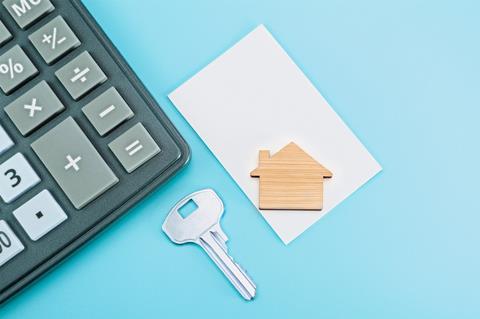Official figures show annual growth in value of homes now outpaced by spiralling inflation
UK house prices plateaued in September according to the first official figures covering the month, pushing the annual price growth for homes below the rate of inflation in the economy as whole.
Office for National Statistics figures for September showed that house prices were unchanged in September on August at an average £295,000, which equated to a 0.1% seasonally adjusted month-on-month rise.

Given the large rise seen in the same period last year, when the temporary stamp duty holiday was coming to an end, the flat growth this year meant the year-on-year price growth fell from 13.1% in August to just 9.5% in September.
This compares to official CPI inflation for September of 10.1% - meaning the value of homes actually marginally depreciated over the year to September, compared to the rest of the economy.
The figures were announced as the ONS also released updated inflation numbers for October showing that CPI inflation has been pushed even higher, to 11.1%, in October. Within this, the ONS said the cost of “housing and household services” rose 11.7% in the year to October – the highest figure on record since this metric was first modelled in 1950.
The ONS’s House Price Index is based on real house sales data compiled by the Land Registry, rather than data from mortgage lenders, which comes from agreed sales.
The house price figures cover the period of the queen’s death and mourning period, and the mini budget and the following week. Housebuilders have reported declining sales since then, and mortgage lenders have reported month-on-month declines in prices in October, with predictions of deeper price falls next year.
Since the mini-budget, average two- and five-year fixed rate mortgage rates have climbed above 6%, the highest for 14 years. The Bank of England put the base rate up to 3% at the start of the month, sparking concern mortgage rates would remain high and that the “era of low interest was over”.
The ONS said transactions in September were provisionally expected to be 37% lower than the same month last year, at 103,930. It said: “It is likely that average house prices were slightly inflated in September 2021, as buyers in England and Northern Ireland rushed to complete property purchases before Stamp Duty Land Tax changes at the end of September 2021.”
The ONS said the South west saw the biggest year-on-year increase in prices, at 11.9%, with the East midlands, East, South east and West midlands all likewise seeing increases of more than 10%. However, it said the North east has now replaced London as the region of England with the lowest growth, falling to just 5.8% annual growth, with London prices now growing by nearly 7%.
Lawrence Bowles, Savills residential research director, said the data showed that house price rises have started to level off across the country. He said: “With mortgage affordability so stretched, we are likely to see sales volumes in the mainstream housing market slow over the rest of the year.
“We’ve forecast average price falls of -10% in 2023, with values recovering through 2024 and beyond as mortgage rates fall back to more affordable levels, though the less mortgage-dependent prime markets – broadly the top 5% to 10% by value – will be less impacted.”
Iain McKenzie, CEO of The Guild of Property Professionals, said: “The next few months are going to be critical for the property industry. Measures are being taken by the government and the Bank of England to bring down inflation, and although this is currently resulting in the rise of interest rates and mortgage payments, the cost-of-living crisis must be brought under control.”











No comments yet